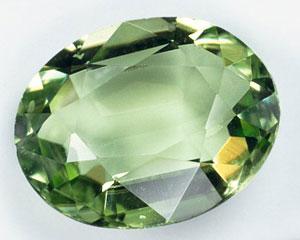There are many classifications of gem stones and minerals, because there too many different opinions on what is what. The definition of a "precious stone" is not objective. It often depends on fashion, demand and portability (note, that demand could depend on anything including the magic qualities of the gem). After reading this article you will be able to get your own opinion on the subject.
English mineralogist of the beginning of the 20th century G.Smith stated, that there were 3 the most important qualities of the gem stone: beauty, durability and rarity. Only diamond, ruby, emerald, blue sapphire, pearl, opal and alexandrite could be called the precious stones in that case. Some countries classify other transparent gems that usually have faceted cut as semi-precious as they do not have all 3 qualities at the same time. Other countries use the term "gem" regardless, because stones that were called "semi- precious" before are sold for more than a fine diamond now.
You probably have your favorite piece of jewelry with a gem. Take it and look at it. Let's see together what makes this gem so attractive?
First of all we notice its color. The magic powers thought to depend on the gems' colors. The color makes the gem attractive, but... is it what we see? All people have their own color perception. It is not easy to describe the exact tint. The light can change our color perception too.
What time of day do you wear your gem? Most people prefer wearing them in the evening. Do you know how electric light affects your perception of the gems? Dark red, blue and purple stones loose their beauty. Orange, yellow and yellow-green stones look better. Day light is the best when you need to see the real colors and gem's qualities.
They do reduce the price of a gem, but do not devaluate. It is extremely difficult to find a colored precious gem stone with no flaws (if your last name is not Rockefeller). The flaws can add an interesting look to a gem and tell of its place of origin. There is a very good chance that a gem with no flaws is an imitation.
Manufacturing flaws are different. It could be wrong proportions of a cut, external fractures, poor polishing. All these flaws devaluate the gems. Be picky when you are choosing your gem, do not let the stones that have any of these flaws into your collection.
http://www.beadsky.com


No comments:
Post a Comment